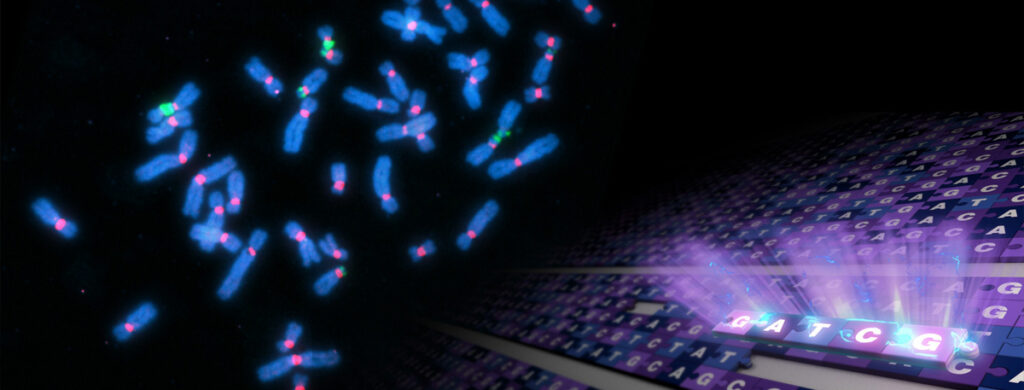News
15 April 2025
Light sheet microscopy: A decade-long journey from DIY innovation to cutting-edge imaging
A look at the technology that provides researchers with deeper insights into complex biological systems.
Read Article

Many new repetitive DNA sequences discovered as part of the consortium work are just now starting to be studied. Here, another member of the Gerton Lab made a significant contribution.
Leonardo Gomes de Lima, PhD, a postdoctoral research associate in the Gerton Lab, has expertise in satellite DNA evolution, sequence organization, and sequence analysis. He previously studied these phenomena in different species of fruit flies, and brought his expertise to the T2T consortium for a second Science paper, in collaboration with Rachel O’Neill, PhD, and her lab at University of Connecticut, focusing on two repetitive DNA sequences at the ends of acrocentric chromosomes.
“Satellite DNAs are repetitive DNA sequences that undergo high evolutionary turnover making them one of the most dynamic features of the genome” explained Gomes de Lima. “Satellite DNA sequences are somewhat species-specific. That is, the sequences are the same within each species but are often very different from species to species, even closely related ones.”
“We found one new satellite DNA sequence that is only present in the short arm of acrocentric chromosomes. We named it WaluSat because we identified long arrays of repetitive sequences that were always associated with one transposable element called Alu—so we named it ‘with’ Alu satellite.”
“When we traced back the evolutionary origin of that sequence,” Gomes de Lima continued, “we could identify it in primates. But we saw that it only expanded in humans, and only in the short arms of the acrocentric chromosomes. In non-human primates, there were just a couple of copies of this sequence, but in humans there were thousands.”

Matt Borchers, Tamara Potapova, PhD, and Leonardo Gomes de Lima, PhD
Another satellite DNA sequence that Gomes de Lima helped discover is a brand-new repeat comprised of one large component and one small component. He named the element Ajax and Teucer after Greek mythological half-brothers, one large and one small, who fought together in the Trojan War. The two components have evolved in tandem as if one big repeat. The Ajax and Teucer element is found on several chromosomes, including acrocentric chromosomes. Its origins and function are unknown.
One type of satellite DNA for which the function is well known is present in centromeric regions. Centromeric satellite DNA in humans is called alpha satellite DNA. These sequences are critical for centromere function. Every centromere has an alpha satellite DNA sequence, and each centromere has a unique but similar DNA sequence for each array.
“Centromeric arrays were the most substantial gaps in the original human genome project. Given their importance in transmission of chromosomes, one of the most meaningful accomplishments of the T2T consortium was the linear assembly of these arrays for each chromosome, led by the Phillippy and Miga Labs,” said Gerton.
Gomes de Lima contributed to experimental confirmation of the centromeric and ribosomal DNA array sizes by a method called digital droplet PCR. Details of the methodology are described in an independent report in Cell Genomics. In the study, Gomes de Lima and colleagues demonstrated that each person contains a unique combination of centromeres, like a fingerprint. He went on to demonstrate that centromeric satellite DNA is unstable in cancer, an exciting insight for researchers who study cancer genomics.
News
15 April 2025
A look at the technology that provides researchers with deeper insights into complex biological systems.
Read Article
News
11 April 2025
“There are few rewards as powerful and as elevating as making a clear, robust scientific observation that advances the field.”
Read Article
News

09 April 2025
New study shows how we can better learn our genome’s hidden grammar, potentially paving the way for personalized medicine.
Read Article
